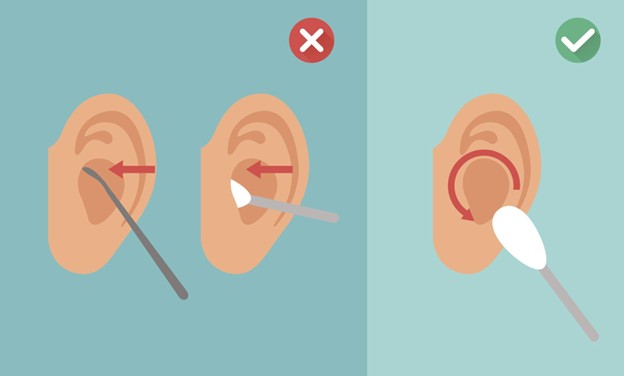Preventing Ear Wax Build Up: Tips for Maintaining Healthy Ears
Ear wax, also known as cerumen, is your body’s natural way of keeping your ears clean and protected. It forms through the combined secretions of two types of glands in the ear canal: sebaceous glands, which produce an oily substance that moisturizes the skin, and ceruminous glands, which release a protein with antimicrobial properties. Together, these substances create ear wax—a sticky barrier designed to trap dust, debris, and harmful microorganisms before they reach your eardrum.
While ear wax often gets a bad rap due to its appearance or texture, it’s not a sign of poor hygiene—in fact, its presence is a sign that your ears are normal and healthy.
While ear wax is essential for maintaining ear health, it can sometimes cause issues when too much is produced, and for some people, ear wax can accumulate faster than it’s cleared away. Over time, this buildup can dry out and harden, potentially leading to blockages that cause discomfort, muffled hearing, or even infections.
Fortunately, the ear is self-cleaning. Natural jaw movements such as talking and chewing help to slowly move old wax from deep inside the canal to the outer ear, where it eventually flakes away. However, this process can be disrupted by common habits like using cotton swabs, inserting objects into the ear, or wearing in-ear headphones for long periods. These can all push wax further into the canal and create impactions that may require professional treatment.
If left untreated, hardened wax can be difficult to remove and may require the use of wax-softening drops or removal by a healthcare professional.
How to Tell If You Have an Ear Wax Blockage
Ear wax blockages often develop slowly and may not cause obvious symptoms right away. In fact, because the changes to your hearing can be gradual, your brain may adjust without you noticing. One symptom that might catch your attention is tinnitus, or a ringing sound in one or both ears. While tinnitus can result from various causes, including medications or other medical conditions, it can also indicate a buildup of ear wax.
More noticeable symptoms of a blockage include:
- A sensation of fullness or “plugged” feeling in the ear
- Earache or general discomfort
- Dizziness or imbalance
- Pressure in the ear
- Coughing (due to stimulation of nerves in the ear canal)
- Itchiness in or around the ear
- Discharge from the ear canal
These symptoms can sometimes overlap with those of other ear conditions, such as infections, so if you’re unsure, it’s always best to have your ears checked by a healthcare provider to rule out more serious causes.
How to Care for Your Ears and Prevent Buildup
In most cases, minimal intervention is needed to keep your ears clean. Here are a few simple tips for maintaining healthy ears and preventing wax buildup:
- Avoid using cotton swabs inside your ears. Despite popular belief, they often do more harm than good by pushing wax deeper into the canal.
- Clean only the outer ear. Use a warm, damp washcloth to gently wipe around the outside of your ear during your regular hygiene routine.
- Allow ear wax to follow its natural course. Chewing and talking help move wax outward, so your ears are often capable of managing themselves.
If you’re looking to soften wax at home, a few drops of olive oil can help keep the ear canal moisturized and assist in the natural movement of wax. However, if you’re planning to have the wax removed professionally, we recommend using a mineral oil with active ingredients for better results—though both options are safe and effective.
To use a softener, place a few drops into your ear once or twice daily for 5–10 minutes while lying on your side. Do this for a couple of days to help loosen hardened wax and make removal easier. Avoid using cold liquids, as they can cause dizziness.
When to See a Professional
If symptoms persist despite at-home care—or if you’re experiencing pain, discomfort, significant hearing loss, or discharge—it’s time to see your audiologist or healthcare provider. Professional ear wax removal is safe, effective, and often quick, especially when softeners have been used in advance.
Taking a gentle and preventative approach to ear care can help you avoid discomfort and keep your hearing sharp. And remember: sometimes the best way to take care of your ears is to leave them alone!
Written by: Carolina Kasem, CDA
Are you in the Forest Hill or Toronto area, and have questions or concerns about your hearing? Stop by Toronto Hearing Health Clinic, we would love to help!


